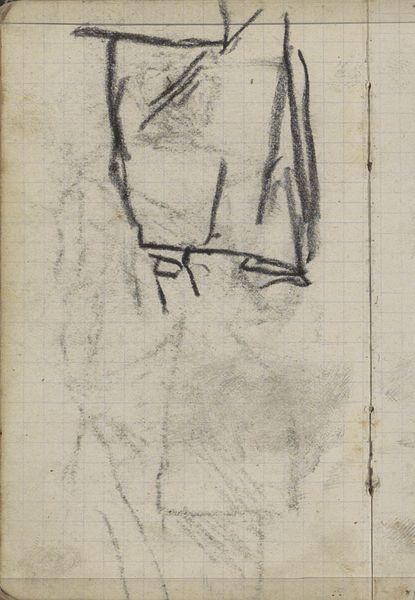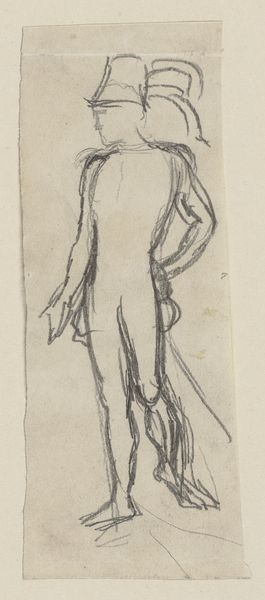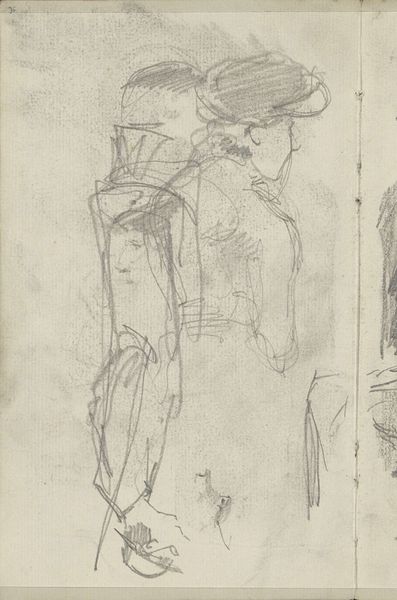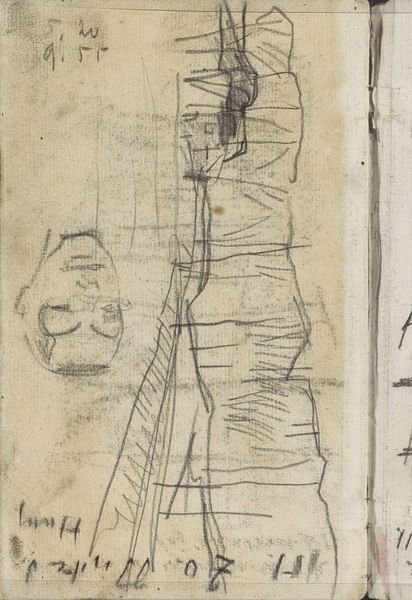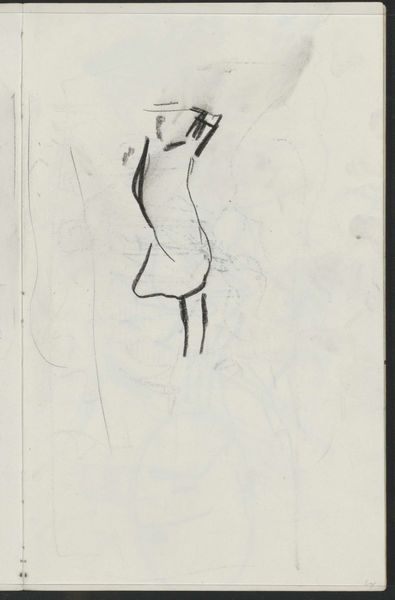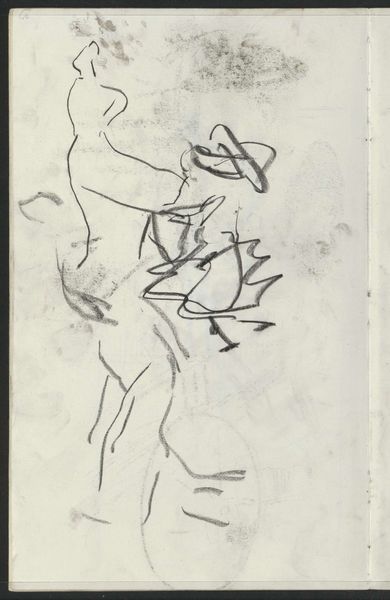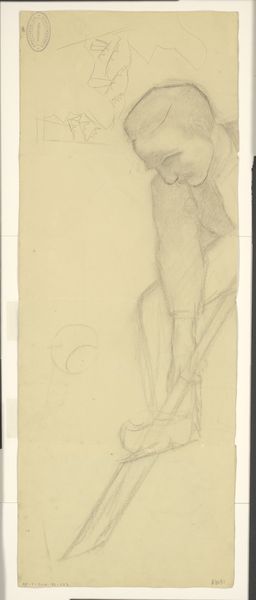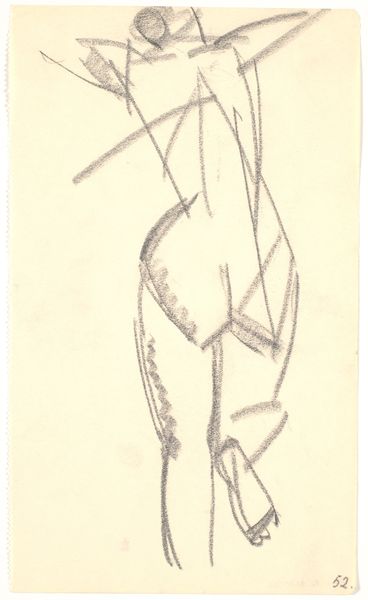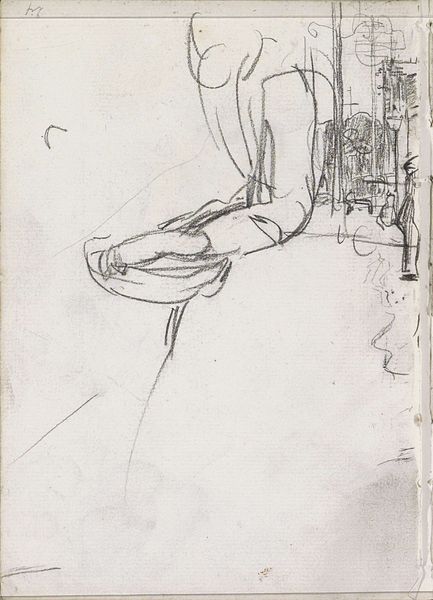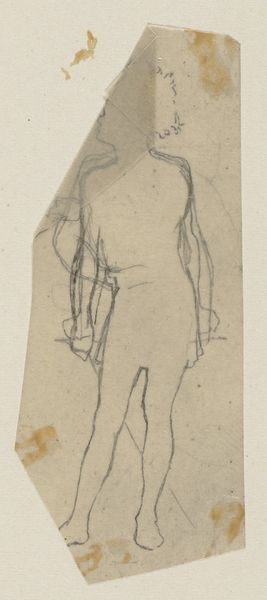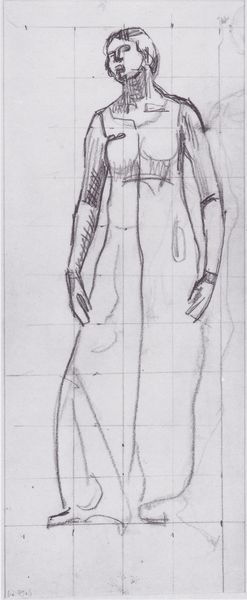
drawing, pencil
portrait
drawing
figuration
sketch
pencil
Dimensions: 50.2 x 18.6 cm
Copyright: Public domain
Curator: This pencil drawing, titled "Swearing from behind", was created by Ferdinand Hodler in 1912. My first thought is: it feels remarkably raw, a glimpse into the artist's process. The figure's pose is so active, and the lines are quick and energetic. Editor: The title is interesting because what does ‘swearing’ really imply here? Is it a formal gesture of promise or defiance? What specific materials did Hodler choose? What paper did he work on, what pencil grade created these sharp lines and smudges that add volume? Curator: Looking at the drawing's relationship to figuration and portraiture gives me a hint about the historical context. Hodler was deeply invested in portraying universal human experiences, and he developed a principle called Parallelism that would reflect repetition, patterns, symmetry of nature. I find a fascinating echo of the figure’s posture into the ethereal one behind, which provides layers and depths to our emotional responses, amplifying the tension inherent in the raised arm gesture. Editor: Precisely! His preparatory drawings, particularly those in pencil, are interesting case studies that unveil Hodler's artistic choices. What socio-cultural narratives were being portrayed when he chose this title for an upward-thrusting, fist-clenching act? Curator: His sketches of figures offer us a deeper look into his mind because he seemed intent on showing how the inner, psychological experience could manifest outwardly in our bodies and what stories could be deciphered from these moments and poses. Editor: Hodler's emphasis on drawing underscores its fundamental significance in his artistic practice. Examining its socio-political conditions further enrich this perspective and provide space for dialogue. What were some social movements in Switzerland in 1912 and how could this imagery of revolt have factored in? Curator: Understanding his art making helps understand society back then, where such images reflected an assertion of autonomy, or call for solidarity in response to prevailing social struggles or cultural concerns. Hodler's dedication towards universalistic expressions were groundbreaking and still leave indelible impacts on audiences. Editor: I appreciate you pointing out how this sketch functions both within his artistic evolution as well as its time’s politics, and I’d consider this viewing a great success!
Comments
No comments
Be the first to comment and join the conversation on the ultimate creative platform.
